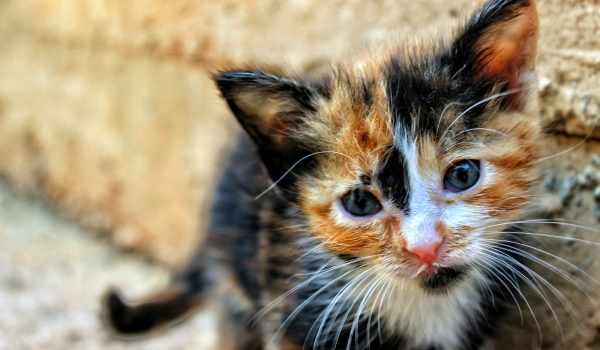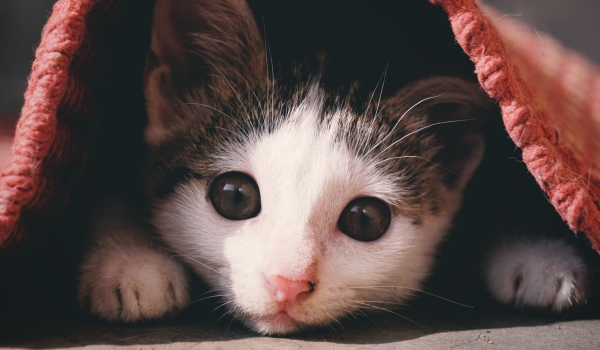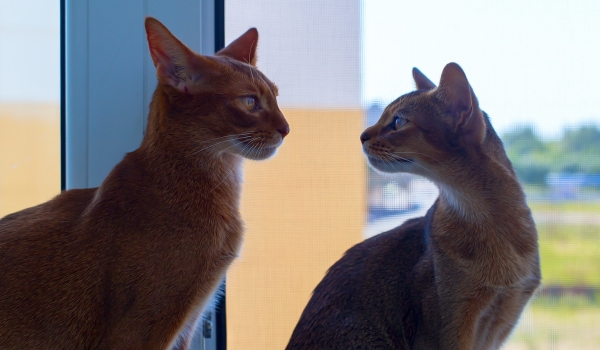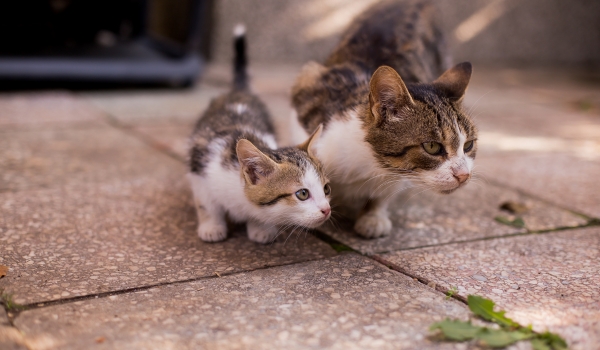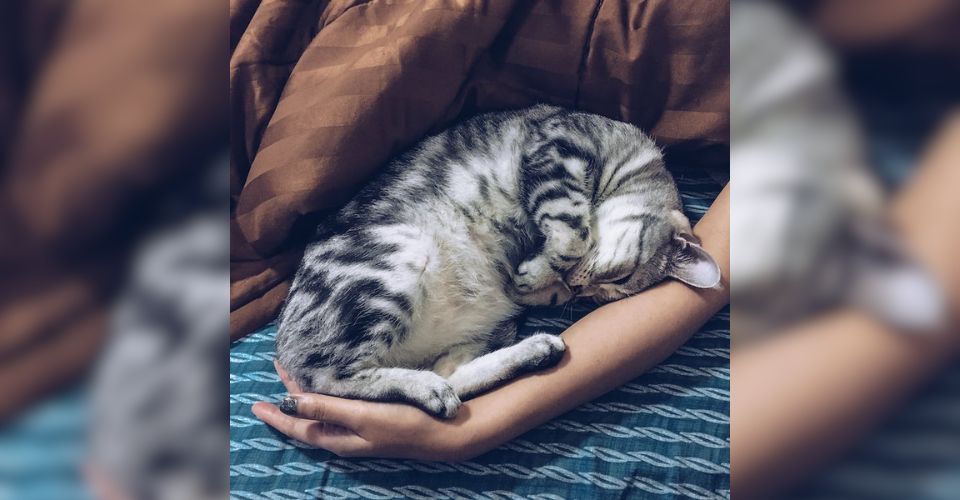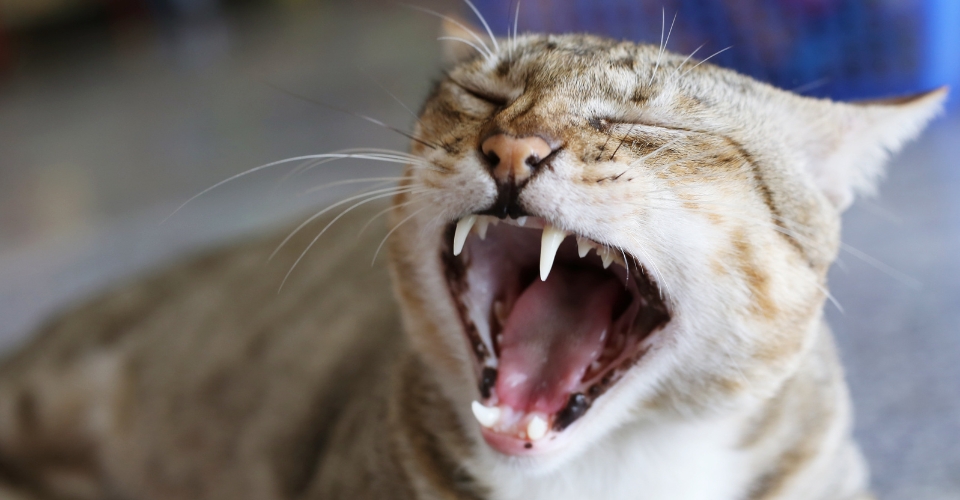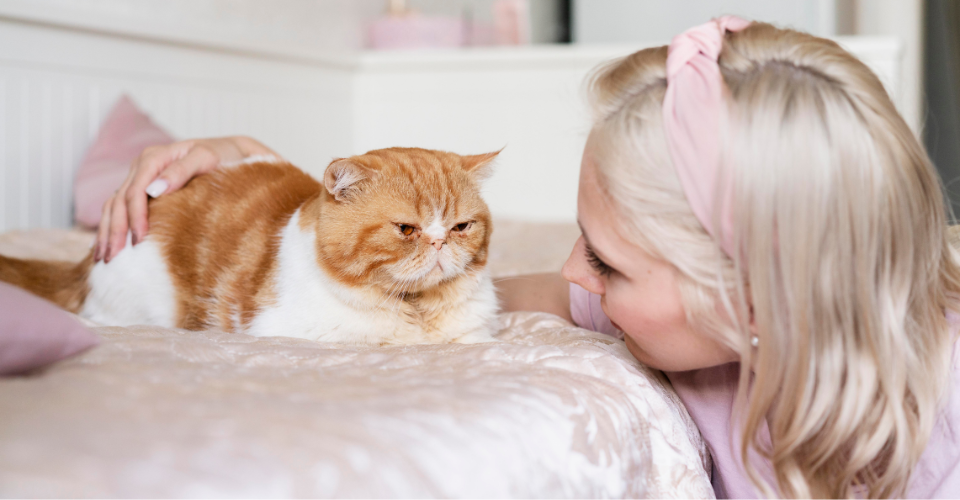So, you have added a new kitten to your family. Congratulations! But wait, you notice something off when it comes face-to-face with your older cat. Are you trying to grasp the reasons for the kitten hissing at the older cat?
Well, it is not that uncommon. You may be trying to create a nourishing environment for the kitty by having multiple cats in the house. If only everything went according to plan.
Why is the Kitten Hissing at Older Cat?
Pet parents notice the kitten hissing at an older cat and wonder why it is showing aggression. Surprise, it is not showing any aggression. It is doing so simply because it is terrified of the cat.
New kittens mostly hiss at older cats because they are anxious and fearful of the older cat.
Besides fear and intimidation, the new kitten may hiss at the older cat if she has not been properly socialized or has previous negative experiences with older cats. There is also a chance of the kitten being in pain or not feeling well and hissing as a defense mechanism.
Also, the kitten has to adjust to a new home and life. So, as an expression of its distress, it bares its teeth and lets out a hissing sound to send the message, “leave me alone”.
Exploring Causes of a Kitten Hissing at Older Cat
Humans enjoy company, and so do some of our tiny friends. It is wonderful to create a nourishing environment for your kitty by having multiple cats in the house.
But the interaction may not always go as planned. You may notice an underlying tension sometimes. And surprise, it is the kitten hissing at the older cat and not the other way round.
About time you discovered the reasons behind this behavior.
Hissing is a Normal Feline Communication
First of all, hissing is one of the ways cats communicate. It is a fairly normal feline behavior. You cannot expect them to speak in legible sentences like humans. So, hissing, meowing, and growling it is.
To understand hissing, imagine a cat baring its teeth and letting out a sound by forcing air through its clenched teeth. Pretty much like the sound of air releasing from a punctured tire. It is one of the many sounds cats employ to express themselves.
What is important is what makes them do it. You might think it could be a conflict. But in reality, it is not the aggressor, but the aggrieved party that resorts to this vocalization.
A good time to learn why cats do so.
The kitten is Hissing Because It is Scared or Anxious
Can you believe it? If you look a little closer at the kitten in question, it does make sense. Kittens or even adult cats hiss when they are scared or upset about something.
Remember when we said it is the aggrieved party that does so? So, even if you feel like the tiny kitty is trying to dominate the older cat, it is worried and anxious. Now that’s something that needs a quick redressal, right?
But first, you need to understand the causes of these feelings. You see in a situation where the kitten hisses at the older cat, in all likelihood it is not from the cat’s litter.
A newly adopted kitten has to adjust to an entirely different environment and individuals (both humans and animals). It was recently separated from its littermates and mother and that in itself is a lot to process. It has to adapt to a new home now. And on top of that, there is an older (stranger) cat in its new home.
From the perspective of the kitten, it is tough. New home, environment, a strange full-grown cat instead of her mother, and new parents. Who knows if the cat decides to be mean?
So, the kitten responds by hissing, possibly turning its body sideways and puffing up its tail to appear bigger. Crazy times call for crazy solutions you know. All in an attempt to avoid an actual confrontation and signal to the older kitty to leave the youngling alone.
Let us now proceed to learn how you can help the kitten feel safe and happy.
What to Do When Your Kitten Hisses an Older Cat?
We know that the kitten hisses at the older cat because it is intimidated by both the feline and a change of environment.
All this means is that you need to actively work to create a safe and loving space where the kitten can happily live and prosper. To help you achieve that, we have listed some tried and tested steps.
Remove the Kitten from the Situation
It is hissing at the older cat to express its distress and to communicate to the older cat not to mess with it. The best help you can offer is to let it out of the situation.
It is not the best of ideas to try to pick it up if its body is tense. You do not want to be at the receiving end of swatting and violent attempts to get out. If it was an introductory meeting at the door, shut the door. Or cut the older cat out of view by placing cardboard in the way.
Once distracted and calmed down, you can remove the kitten. Either pick it up yourself or encourage it to go to its designated place.
Let the Kitten Hide If It Hisses at Older Cat
Hissing, swatting, and piloerection are all signs that your tiny feline is scared. If it tries to move away and hide, let it be. It is a natural ancestral instinct that makes them feel safe.
Imagine the wild cat that is both a predator and prey. When too small or insufficient in comparison to the attacker, it would climb up a tree or find another spot to safety.
For someone who is making a kitty addition to a cat home, it is safe to assume you have a cat tree or two. Or a perch, or other climbing or hiding spaces for the cat.
Let it be if the kitten approaches those, or a laundry basket or whatever it deems safe to hide.
Properly Reintroduce the Cats
To ensure that all the pets get along well, it is imperative to make proper introductions. The hissing and spitting might still happen. Because after all, they are just getting to know each other.
It takes time to build trust. Even more for both the cats to peacefully coexist. If you are lucky, they become best buddies a few weeks or months down the lane.
For now, you need to take the introduction process slower.
For those not familiar with the proper introduction between the new and resident cat, below is a quick summary.
- Create a separate safe space for the new kitten, to which the older cat does not have access. Provide a sufficient supply of water, food, litter box, and bedding.
- Introduce the cats by feeding them on the opposite sides of a closed door. Let the interaction go on for about 5 minutes.
- Let them smell each other by placing their bed or a toy in the other cat’s space.
- If there is no sign of anger or aggression, proceed to feed them across a child or pet door.
- Make climbing unapproachable by hiding the top of the pet door behind a large piece of cloth.
- At this point, you may notice some growling, hissing, spitting, and swatting. If it continues longer than a minute or two, end the session.
- Distract the kitties when they display signs of discomfort with a toy or by blocking their view of the other cat.
- Next, make the meetings less frequent. Also, place the food bowls or treats, far apart enough for the kitties to comfortably eat.
- Give ample attention to both cats. Let the new cat feel welcome and impress on the older one that it is just as important and valued.
- Slowly try reducing the distance between the two cats during their meetings. Still, keep up the pet gate.
- If things go smoothly you may remove the pet door. Increase or decrease the duration depending on how they behave.
- Slowly, the cats will learn to be ok with each other’s presence. And who knows, they may even become great friends.
Read more about multiple cats peacefully coexisting in our article: 6 Most Effective Ways of Getting Your Cats Used to Each Other
Use Pheromones to Relax the Kitten
Pheromones are chemicals that imitate the scent of the facial glands of a cat. Our tiny friends mark their territory by rubbing their scent glands on different surfaces.
Kittens learn this behavior from their mothers in their infancy and repeat it with other members of their litter. Similarly, cats who are friendly with each other engage in this behavior to mark the other as a member of their group.
Even if you have a single cat, it marks you, the home, furniture, and everything else as its territory. Recall some of those adorable facial rubs it gave you.
Artificially giving them pheromones helps them get a feeling of familiarity. As if they are moving about in an area that is already their own.
A pheromone diffuser is a device that needs to be plugged in to release these chemicals in the form of a mist. Though undetectable for humans, they put cats at ease, relieving them of stress and reducing the chances of a conflict.
Find your pheromone kit sufficient for a period of 30 days here.
This particular product is designed for a multi-cat home to make things comfortable for all parties.
Give Adequate Attention to Both Cats
You brought them home to make a part of your family. Now is the time to show it to them. It is easier to show affection to the kitten, they are the cutest. Also, you may focus on pampering and caring for the newer addition to the family.
But the older cat needs it just as much, if not more. Think of it as a dynamic between your older kid with their new sibling. Chances of a sibling rivalry are high if enough attention is not paid to the kid who had been the center of your attention thus far.
So, you need to spend quality time with both your resident cat and the new kitten. Keep an eye out for signs of stress in your older cat.
A change in environment, such as the addition of a kitten, can be stressful. If your cat or the kitten continues to exhibit signs of stress and anxiety for longer periods, you should consult a veterinarian or a feline behaviorist.
Final Words: Causes of Kitten Hissing at Older Cats and Possible Solutions
A kitten hissing at an older cat could be due to fear, stress, or an underlying tension with the presence of an unfamiliar cat. Address it by removing the kitten from the situation, distracting it with a toy, or blocking its view of the cat. Reconcile them with patience, proper introduction, and affection.


